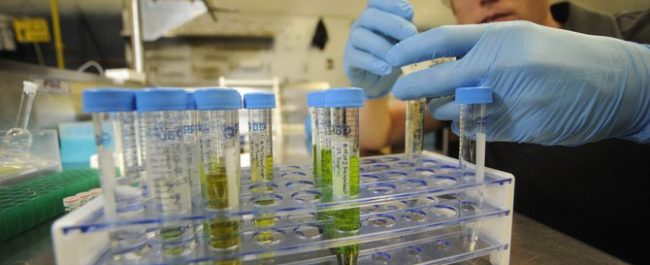Reliable lab testing is one of the crucial elements that make the difference between a reputable, legal industry and a dodgy, illegal one. And this principal is extra valid when it comes to an industry as young, vulnerable, and closely scrutinized as cannabis.
Potency Testing
Although there are people who likely don’t even think about measuring out their dose of THC, nascent cannabis patients, those micro-dosing, children, and other folks using cannabis to combat medical ailments require accuracy in their product’s potency label. Those using strictly CBD products, and not seeking intoxication, want to know that there is no THC in their medicine. Thus, consumers, not to mention manufacturers and other decision-makers, need to have trust in what numbers their lab generates.
THC Testing for Recreational Cannabis
When it comes to recreational use, THC is always one of the first things a potential customer is interested in.
While it seems like a safe bet (and often times likely is), purchasing a product that you think is less potent in THC is one of the easiest ways to go overboard. And going to the extreme may not make for a positive experience regardless of how good the actual product may be. In fact, consuming an excessive amount of THC can cause a reverse effect and can lead to the anxiety and infamous paranoia often depicted in movies. Best case scenario, too much THC will just turn you into a vegetable for a few hours, or send you on a mental journey you may not be prepared to face.
And purchasing a cannabis product thinking it has more THC than it actually does can be pretty disappointing. Above else, some manufacturers touting elevated potency levels in their lab tested products have been found to be serious lacking in their claims. [1] It can be a step away from a downright scam.
Lab Testing Drama
Recent drama with cannabis lab testing in Washington provided a glimpse of the practical implications of discrepancies between different labs’ test results.
A recent study provided a statistical analysis of cannabis lab data provided by the Washington State Liquor and Cannabis Board to the researchers. [2] The authors found statistically significant trends between the THC and CBD contents that the labs measured for their clients.
“Our analyses revealed clear, systematic differences in the results obtained by different testing facilities in Washington,” concluded the authors. “It is crucial that precise standards are adopted by the industry to ensure that laboratories produce results that are reproducible across labs, independent of the exact testing method used, with the ultimate goal of reporting results consumers can trust.”
Of course, it makes sense that some of the variance would stems from the fact that the labs did not measure the same samples, as in a round-robin. Rather, the data from the trace ability system was acquired by Washington labs for their various clients, who in turn are producing unique products from disparate plants. Some further variance would come from the nature of the analytics, since every measurement a lab can make will have some amount of error, regardless of how strong their standard operating procedures might be.
Without strict standardization of lab testing, products may not be as advertised on the label. Additionally, a lack of laboratory oversight can create leeway for testing facilities and cannabis sellers to manipulate results and cheat consumers. Standardized methods, however, have been and are continuing to be developed by groups like AOAC [3] and ASTM [4]. As cannabis labs implement these methods, differences between labs will be more transparent, since at least the methods used to get at the quantitative numbers will be comparable.
References:
[1] Vandrey et al., “Cannabinoid Dose and Label Accuracy in Edible Medical Cannabis Products”, JAMA, 2015, 313(24): 2491-2493. (cited by 112; impact factor = 47.661) [2] Jikomes & Zoorob, “The Cannabinoid Content of Legal Cannabis in Washington State Varies Systematically Across Testing Facilities and Popular Consumer Products”, Scientific Reports, 2018, 8: open access. (Cited by 2, impact factor = 4.122) [3] Giese et al., “Development and Validation of a Reliable and Robust Method for the Analysis of Cannabinoids and Terpenes in Cannabis”, J AOAC Int, 2015, 98(6): 1503-1522. [4] D8196-18, “Standard Practice for Determination of Water Activity (aw) in Cannabis Flower”, ASTM International, West Conshohocken, PA, 2018, www.astm.org







